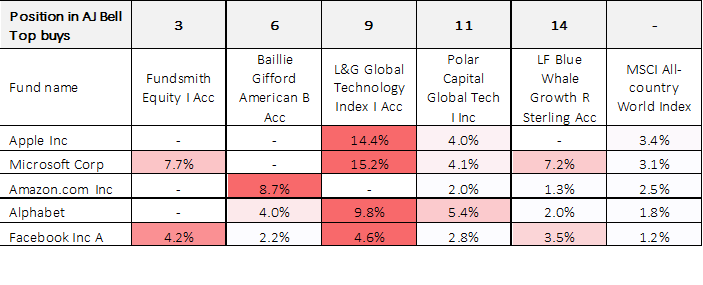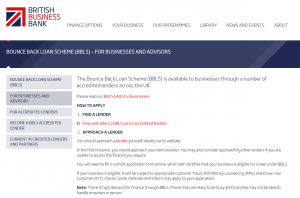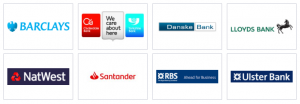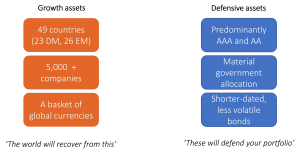
The Government has announced a range of measures to assist businesses in dealing with the financial impact of COVID-19. We have outlined below the various support packages available. We will be in touch when details of how to apply for the various packages become available.
HELP FOR THE SELF EMPLOYED
The scheme is called the Coronavirus Self-Employment Income Support Scheme (CSEISS).
If you have suffered a loss in income, a taxable grant will be paid to the self-employed or partnerships, worth 80% of profits up to a cap of £2,500 per month.
Initially, this will be available for three months in one lump-sum payment and will start to be paid from the beginning of June.
You cannot apply for this scheme yet. HMRC will contact you if you are eligible for the scheme and invite you to apply online.
Government advice: Individuals do not need to contact HMRC now and doing so could delay the work being undertaken to introduce the scheme.
Who is eligible?
Self-employed individuals and a those who are a member of a partnership. In addition, those eligible must have more than half their income from being self-employed and:
- have submitted your Income Tax Self-Assessment tax return for the tax year 2018-19
- traded in the tax year 2019-20
- are trading when you apply, or would be except for COVID-19
- intend to continue to trade in the tax year 2020-21
- have lost trading/partnership trading profits due to COVID-19
Your self-employed trading profits must also be less than £50,000 and more than half of your income come from self-employment. This is determined by at least one of the following conditions being true:
- having trading profits/partnership trading profits in 2018-19 of less than £50,000 and these profits constitute more than half of your total taxable income
- having average trading profits in 2016-17, 2017-18, and 2018-19 of less than £50,000 and these profits constitute more than half of your average taxable income in the same period
If you started trading between 2016-19, HMRC will only use those years for which you filed a Self-Assessment tax return.
There a few individuals who have not submitted their 2018-19 Self-Assessment tax return and to qualify they now have until the 23 April 2020 to do so.
CORONAVIRUS JOB RETENTION SCHEME
Under the Coronavirus Job Retention Scheme, all UK employers will be able to access support to continue paying part of their employees’ salary for those employees that would otherwise have been laid off during this crisis. All UK businesses are eligible.
Eligibility
You will need to:
- designate affected employees as ‘furloughed workers,’ and notify your employees of this change – changing the status of employees remains subject to existing employment law and, depending on the employment contract, may be subject to negotiation
- submit information to HMRC about the employees that have been furloughed and their earnings through a new online portal (HMRC will set out further details on the information required)
HMRC will reimburse 80% of furloughed workers wage costs, up to a cap of £2,500 per month.
HMRC are working urgently to set up a system for reimbursement. Existing systems are not set up to facilitate payments to employers.
RATES HOLIDAY
The Northern Ireland Executive has committed to providing a three month rates holiday to all businesses from April to June.
BUSINESS SUPPORT GRANT SCHEMES
The Executive announced last week a grant of £10,000 to be provided to all small businesses who are eligible for the Small Business Rate Relief Scheme and a grant of £25,000 to be provided to companies in the hospitality, tourism and retail sectors with a ratable value from £15,000 up to £51,000.
Together these schemes will provide circa £370m of assistance to some of the most vulnerable businesses by helping their immediate cash flow pressures.
Economy Minister Diane Dodds announced the first set of payments for small businesses impacted by the Coronavirus crisis will be made under the Small Business Grant Scheme on 31 March, if not before then.
An online portal: https://www.covid-19smallbusinessgrants.economy-ni.gov.uk/
has gone live for businesses to register their bank and rates details to secure payment.
Payments of the £10,000 grant will be available in cash to 27,000 small businesses including those in receipt of the Small Business Grants Scheme. An additional 4,000 businesses in the tourism, hospitality and retail sectors will receive £25,000 in cash if they have a ratable value of between £15,001 and £51,000.
DEFERRING VAT AND INCOME TAX PAYMENTS
The Government will support businesses by deferring Valued Added Tax (VAT) payments for 3 months. If you’re self-employed, Income Tax payments due in July 2020 under the Self-Assessment system will be deferred to January 2021.
VAT
For VAT, the deferral will apply from 20 March 2020 until 30 June 2020. All UK businesses are eligible. If you cannot pay remember to cancel your Direct Debit.
How to access the scheme
This is an automatic offer with no applications required. Businesses will not need to make a VAT payment during this period. Taxpayers will be given until the end of the 2020 to 2021 tax year to pay any liabilities that have accumulated during the deferral period. VAT refunds and reclaims will be paid by the government as normal.
INCOME TAX
For Income Tax Self-Assessment, payments due on the 31st July 2020 will be deferred until the 31st January 2021.
If you are self-employed you are eligible. This is an automatic offer with no applications required.
No penalties or interest for late payment will be charged in the deferral period.
HMRC have also scaled up their Time to Pay offer to all firms and individuals who are in temporary financial distress as a result of Covid-19 and have outstanding tax liabilities.
SUPPORT FOR BUSINESSES WHO ARE PAYING SICK PAY TO EMPLOYEES
The Government will make legislation to allow small and medium-sized businesses and employers to reclaim Statutory Sick Pay (SSP) paid for sickness absence due to COVID-19.
The eligibility criteria for the scheme will be as follows:
- this refund will cover up to 2 weeks’ SSP per eligible employee who has been off work because of COVID-19
- employers with fewer than 250 employees will be eligible – the size of an employer will be determined by the number of people they employed as of 28th February 2020
- employers will be able to reclaim expenditure for any employee who has claimed SSP (according to the new eligibility criteria) as a result of COVID-19
- employers should maintain records of staff absences and payments of SSP, but employees will not need to provide a GP fit note.
- eligible period for the scheme will commence the day after the regulations on the extension of SSP to those staying at home comes into force
- the government will work with employers over the coming months to set up the repayment mechanism for employers as soon as possible.
You are eligible for the scheme if your business is UK based and your business is a small or medium-sized and employs fewer than 250 employees as of 28th February 2020.
THE CORONAVIRUS BUSINESS INTERRUPTION LOAN SCHEME
A new temporary Coronavirus Business Interruption Loan Scheme, delivered by the British Business Bank, will launch this week to support primarily small and medium-sized businesses to access bank lending and overdrafts.
The government will provide lenders with a guarantee of 80% on each loan (subject to a per-lender cap on claims) to give lenders further confidence in continuing to provide finance to SMEs. The government will not charge businesses or banks for this guarantee, and the Scheme will support loans of up to £5 million in value.
Businesses can access the first 12 months of that finance interest free, as government will cover the first 12 months of interest payments.
You are eligible for the scheme if:
- your business is UK based, with turnover of no more than £45 million per year
- your business meets the other British Business Bank eligibility criteria
How to access the scheme
The full rules of the Scheme and the list of accredited lenders is available on the British Business Bank website: https://www.british-business-bank.co.uk/ourpartners/coronavirus-business-interruption-loan-scheme-cbils/
All the major banks will offer the Scheme once it has launched. There are 40 accredited providers in all.
You should talk to your bank or finance provider (not the British Business Bank) as soon as possible and discuss your business plan with them. This will help your finance provider to act quickly once the Scheme has launched. If you have an existing loan with monthly repayments you may want to ask for a repayment holiday to help with cash flow.
The scheme will be available from early week commencing 23rd March.
SUPPORT FOR BUSINESSES PAYING TAX: TIME TO PAY SERVICE
All businesses and self-employed people in financial distress, and with outstanding tax liabilities, may be eligible to receive support with their tax affairs through HMRC’s Time to Pay service.
These arrangements are agreed on a case-by-case basis and are tailored to individual circumstances and liabilities. You are eligible if your business pays tax to the UK government and has outstanding tax liabilities.
If you have missed a tax payment or you might miss your next payment due to COVID-19, please call HMRC’s dedicated helpline: 0800 0159 559. If you’re worried about a future payment, please call them nearer the time.
























Recent Comments